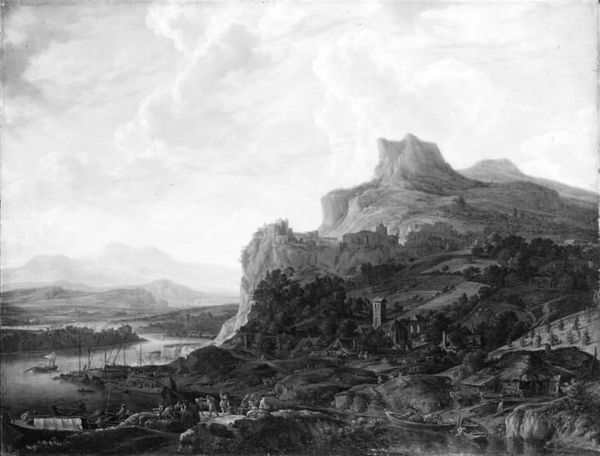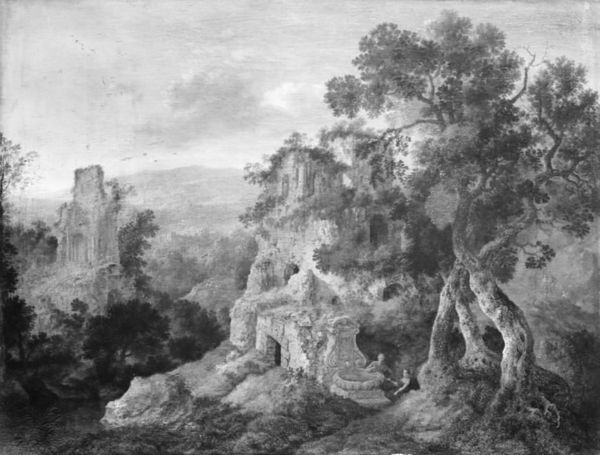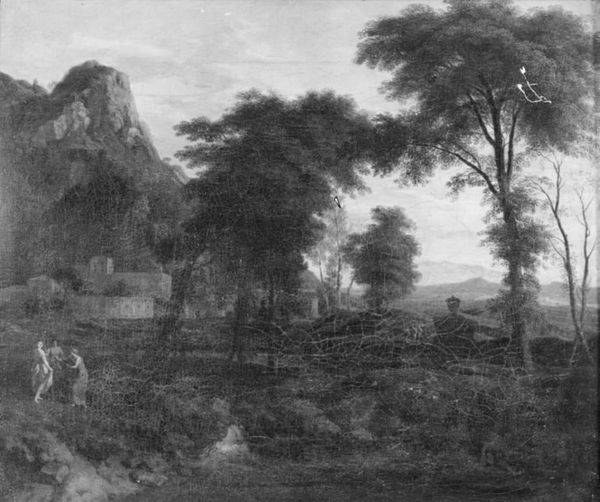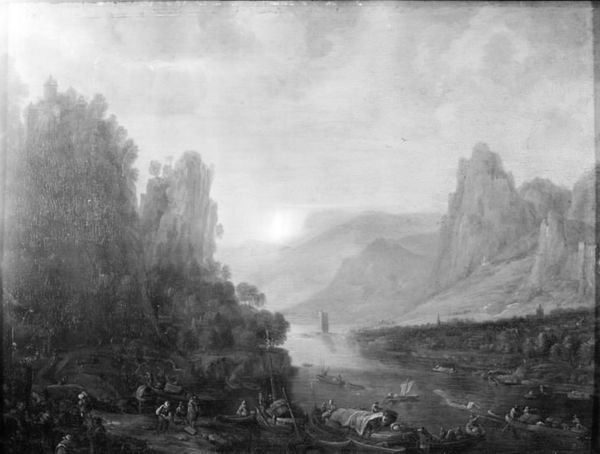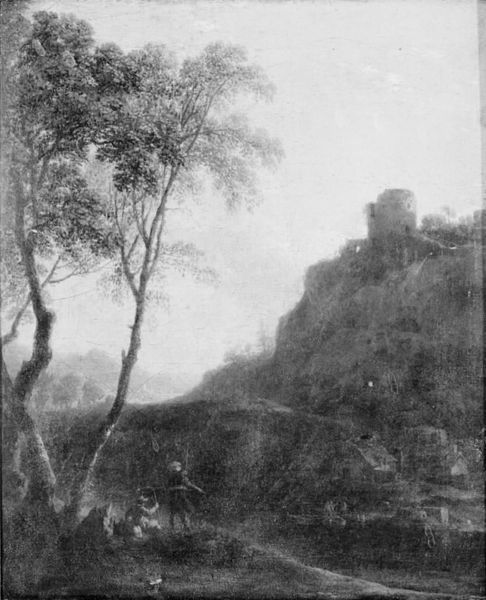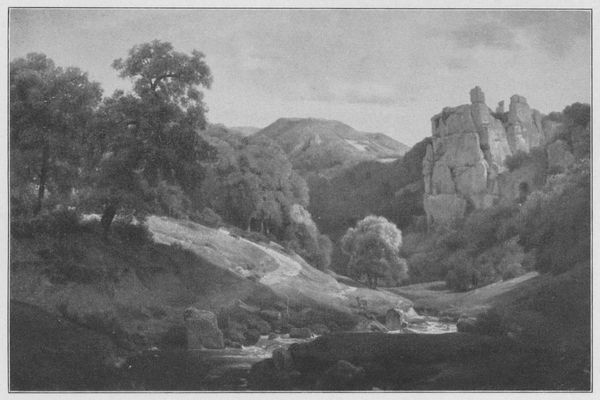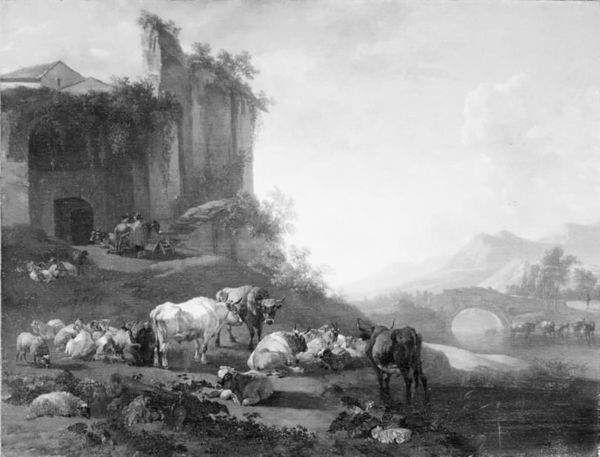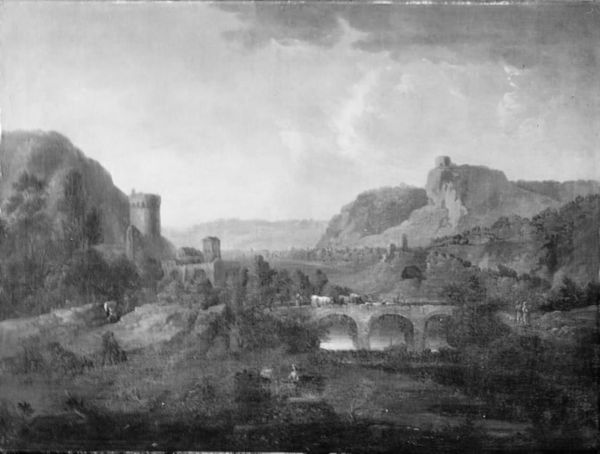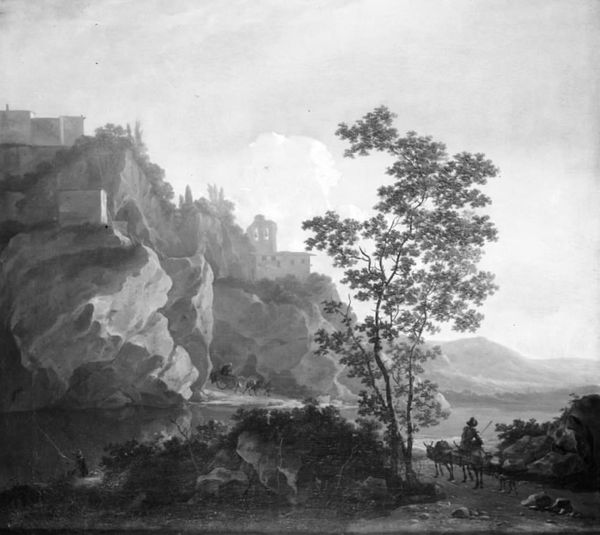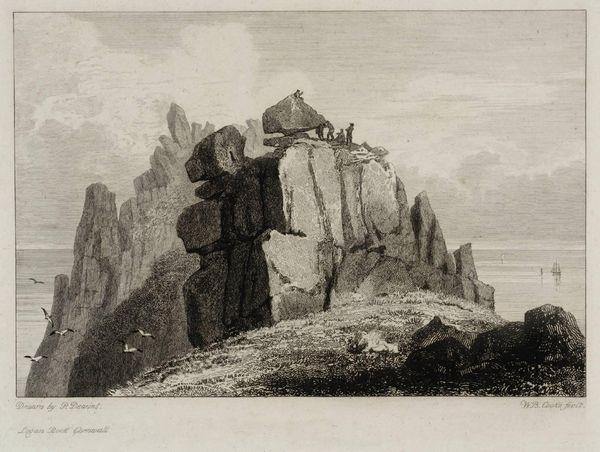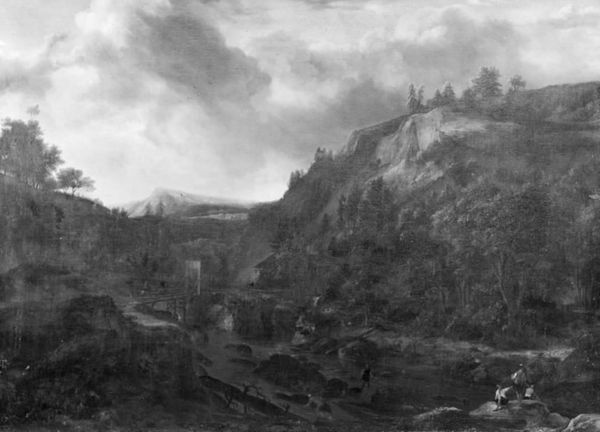
painting
#
painting
#
landscape
#
classical-realism
#
romanticism
#
chiaroscuro
#
history-painting
#
academic-art
Dimensions: 114.5 cm (height) x 100 cm (width) (Netto)
Editor: Here we have Hans I Jordaens's "The Cascate di Tivoli," painted in 1809. The play of light across the ruins and the waterfall creates a somewhat melancholic scene. What can you tell me about it? Curator: This piece reflects the Romantic movement's fascination with ruins and the sublime power of nature. It invites us to consider the political undertones of idealizing the past, particularly within the context of early 19th-century Europe, fresh from the throes of revolution. How does the picturesque depiction of the working-class figures alongside these decaying monuments speak to the artist's intended audience, and their views on class and power? Editor: That's an interesting perspective. I initially saw the figures as just part of the landscape, adding to the scale, but now I’m thinking about who gets to appreciate these scenes, and who just lives in them. Curator: Exactly. Jordaens uses chiaroscuro to enhance the dramatic effect, yes, but also to create a sense of hierarchy. Light illuminates the ruin, perhaps signifying the Enlightenment ideals associated with classical architecture. The figures remain in shadow, bound to labor and the land. Editor: So the painting, on the surface about beauty and history, is also making a subtle commentary about societal structures. Curator: Precisely. What does it mean to revisit and reimagine such classical architectural remains as those on view today? This artwork reflects a broader ideological landscape where nostalgia for the past can be a form of political statement. Editor: I didn't expect to find such a nuanced story in a landscape. Thanks for drawing out these layers. Curator: And thank you for your thoughtful observations. It highlights the power of art to both reflect and shape our understanding of the world.
Comments
No comments
Be the first to comment and join the conversation on the ultimate creative platform.
